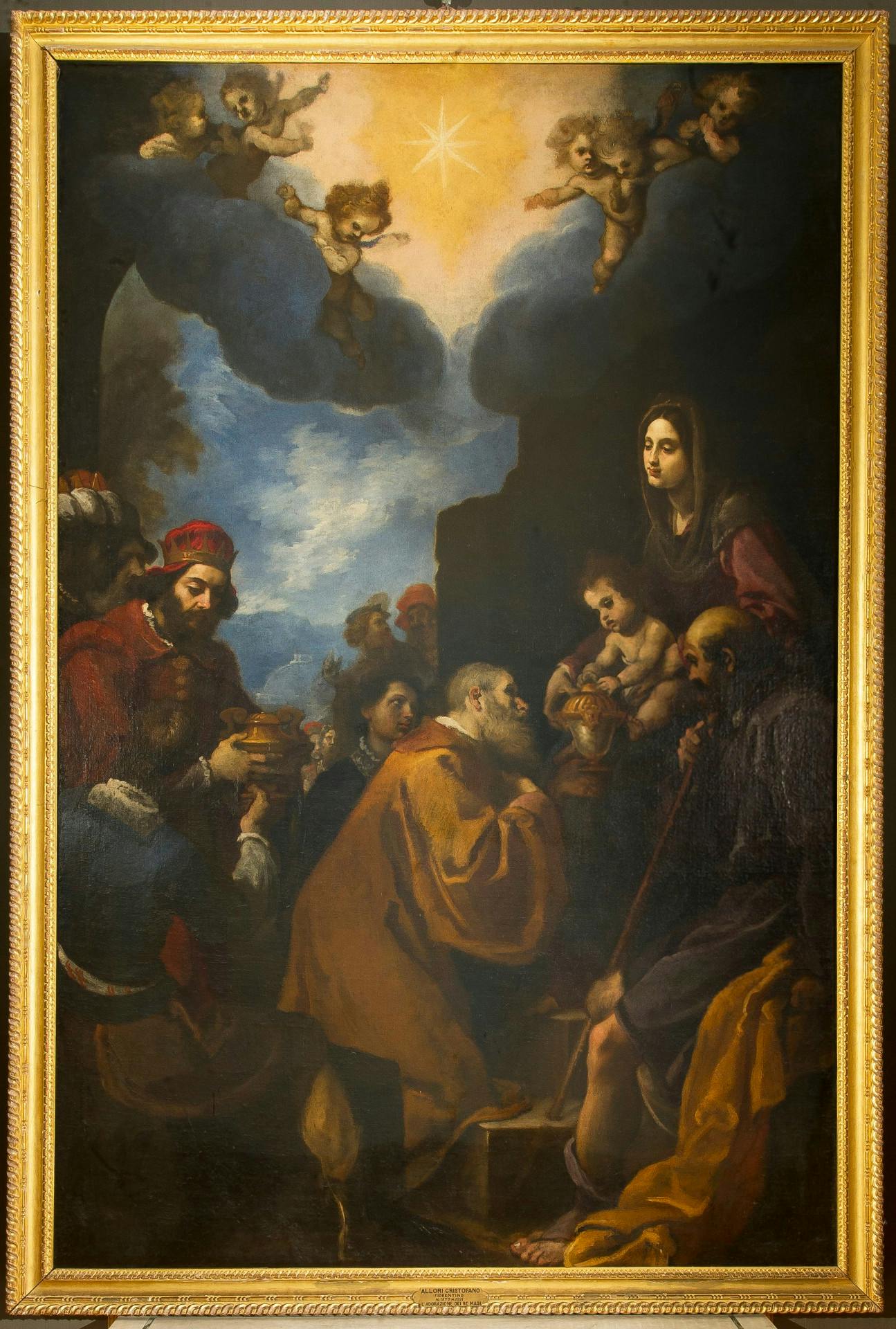Adoration of the Magi
Cristofano Allori (Florence 1577- 1621)
This is a large altarpiece, the origins of which are still not well known, since some experts have said that it was painted as part of the decorative campaign for the Sanctuary of Fontenuova in Monsummano, in which Cristofano Allori also participated in 1611. Others have advanced the theory that it was destined to one of the altars of the Duomo of Pisa, where a second version, the work of his pupil and collaborator, Zanobi Rosi was hung. The composition follows a successful prototype by Cigoli, known in different versions (Hoare collection in Stourhead; National Museum of Lucca); in these paintings, the diagonal position of the group formed by the Virgin and Child - Venetian in origin and then widely used by Carracci and by Po Valley painters towards the end of the 16th century, allowed more movement, space and airiness as it allows the opening of large areas of landscape in the background. On Allori’s canvas, the dense texture of the painting, the bold, dark colours and the deep, contained expressiveness of the faces of the Magi and of Mary, show an important passage in the painter’s career, who, after his period in Rome, showed that he had reflected a good deal on the new Caravaggio style works and those of Rubens. The bottom of the work is unfinished, as mentioned also by biographer Baldinucci who records its early entry into the grand ducal collections, where it is first recorded in the Pitti inventory in 1638.
